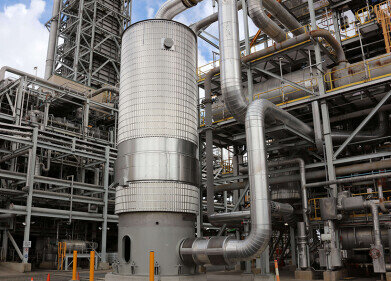Air Clean Up
What is Biofiltration?
Jan 06 2015
A biofilter is a self-sufficient method of cleansing toxic air, water and other common substances. It is used across many industries and applications to control pollution and odour - sometimes in surprising ways. So how does biofiltration actually work? To begin, let’s look at the components of a biofilter.
What is a biofilter made of?
The basic principles of biofiltration are simple. Naturally occurring living matter such as plants, peat and wood are used to filter out harmful or offensive contaminants. And, because this biomatter contains an efficient microbial ecosystem with the presence of fungi and bacteria, the process leaves no pollutants behind.
The biofilter material is usually packed into a bed, which isolates and degrades the pollutants in the air or water when it is slowly filtered through. The exact setup varies from application to application, but the basic concept is always the same.
Who uses biofiltration?
The history of biofiltration stretches back almost one hundred years. In 1923, it was first conceived as an idea for treating odorous emissions. And since then its usage has grown considerably - across industries as diverse as pharmaceuticals, agriculture and even marine life.
One of the most notable usages of biofiltration is at farms - including barns and manure storage. Livestock not only produce smelly gases, but they contribute to global warming too with the emission of potent greenhouse gases such as methane. To combat this, biofiltration is used - often with peat and wood chippings to get rid of offensive odours. It can even stop the spread of airborne viruses.
Biofiltration is used to treats volatile organic and inorganic compounds (VOCs and VICs). This includes paint industries, oil and gas plants, petrochemicals and waste water treatment.
But the use of biofilters is not limited to mass industrial processes or large businesses. Domestic uses include the maintenance of fish tanks - with the likes of red seaweed used to filter nitrogen from the water - and the use of biofilters in properties that are not connected to mains sewerage systems.
What does the future have in store?
With its low running costs, low maintenance, and reliable technological background, biofiltration is often a sensible choice for pollution control. But the method is continuing to push the boundaries - perhaps most notably with the recent use of biofiltration to treat patients in the latest Ebola outbreak. The device is used in conjunction with a dialysis machine, and is designed to filter viruses and immunity-suppressing proteins from the blood.
While biofilters have been in use for almost a century, there’s still a lot of scope for further exciting developments. It’s certainly apt to say ‘watch this space’. For more information on this topic and the exciting possibilities, read: 5 Unusual Examples of Biofiltration.
Events
IWA World Water Congress & Exhibition
Aug 11 2024 Toronto, Canada
Aug 25 2024 Stockholm, Sweden and online
Sep 03 2024 Mexico City, Mexico
Sep 03 2024 Mexico City, Mexico
Sep 03 2024 San Diego, CA, USA














